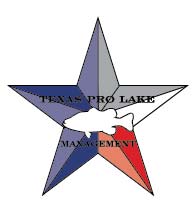Conservation Summit Emphasizes Fisheries Management 
“See the dozens of unique artificial fish habitat models, fish attractors and fish cover used at fishiding.com, the leader in science based, proven, fish protection. This something that I promised to do when I came back to B.A.S.S. last year,” said National Conservation Director Noreen Clough, who added that she is “very excited to bring back an historic event unique to B.A.S.S. Conservation.”
Federation Nation conservation directors, state fisheries managers, academics, “and other notables in fisheries and aquatic resource conservation” will attend.
An inaugural Fisheries Management Workshop on Saturday will be one of the summit’s highlights, as will a keynote address by Jim Martin, Berkley Conservation Institute director, at Saturday night’s awards banquet. Martin also will give closing comments on Sunday.
“Jim is a great partner with B.A.S.S. and an awesome motivational speaker in the conservation world,” Clough said.
Saturday’s workshop will feature Dr. Mike Allen from the University of Florida, Dr. David Philipp from the University of Illinois, and Gene Gilliland from the Oklahoma Department of Wildlife Conservation, three of the nation’s foremost experts on fisheries management.
“We’ve been able to bring together fisheries scientists from universities and states around the country to share with us the latest in black bass management,” said Clough.
Among other topics, Philipp will provide “the Northern perspective” on fishing for nesting bass, and Allen will offer the Southern perspective. Gilliland will talk about tournament mortality issues, catch-and-release impacts on growth, and advances in techniques and tools, including the Alabama Rig.
Conservation directors also will learn about trends in fish culture and stocking, illegal stocking, and spatial patterns in bass habitat use and angling. They then will move to breakout sessions to discuss management and science/outreach needs for bass fisheries.
Following a welcome from B.A.S.S. co-owner Jim Copeland, Friday’s agenda will feature mentoring sessions, legislative updates, and news from the conservation directors. The latter will include the latest on ReBaits, the popular program initiated by Florida’s Eamon Bolten to encourage anglers to recycle or properly dispose of their used plastic baits.
Gordon Robertson, vice-president of the American Sportfishing Association, and Chris Horton, mid-states coordinator for the Assembly of State Caucuses, will discuss federal and state legislation related to fisheries, as well as offer insights about working with legislators and getting involved politically.
Allen and Dr. Mike Netherland from the U.S. Army Corps of Engineers will discuss aquatic vegetation management and related issues, including the likelihood that herbicide application changes the behavior of fish.
Sunday’s half-day program will offer insights on how to partner with state agencies from a panel of fisheries chief, a look at the process behind fisheries management from Gilliland, and federal updates on the 75th anniversary of the Sport Fish Restoration Program (Wallop-Breaux) and the U.S. Fish and Wildlife Service fisheries program.








